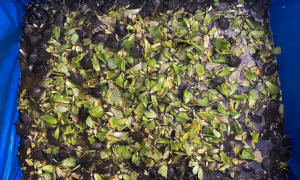|
Around 3,200 yellow-spotted Amazon river turtles, known locally
as taricayas, were freed as part of a plan to repopulate the
species, which is threatened by hunting.
The tiny hatchlings were carefully carried in containers up to
the shores of the river on Tuesday, then released with the help
of local children.
The baby turtles quickly scurried into the water.
"We've experienced a drought this year a little on the strong
side; that's why hatching has been a bit higher than in previous
years since the sun is so strong," said biologist Zabryna Pipa
Perea of the Amarumayu Movement, a private initiative dedicated
to protecting the Amazon's native species.
Peru has the second-largest Amazonian rainforest territory,
after neighboring Brazil.
The turtles, with brown or olive-colored shells, are known for
their distinctive yellow spots and black scales. Hatchlings
measure just a few centimeters long.
Normally, their incubation period lasts from 60 to 72 days,
which this year was cut to around 45 days, according to Pipa.
"This is due to the high temperature and greater drought in the
area," she said.
Since the beginning of the year, Peru has been facing the
effects of the weather phenomenon known as El Niño, which
produces an increase in the temperature of the Pacific Ocean and
causes heavy rains on the coast, while triggering heat waves and
droughts in other areas.
Scientists agree that conservation of the Amazon rainforest is
vital to avoid catastrophic climate change, because of its
capacity to absorb greenhouse gases.
But over the past two decades, more than 19,700 square
kilometers (7,600 square miles) of the Peruvian Amazon have been
destroyed, according to government data.
"We're releasing life. This year we're releasing 3,200 taricayas,
bringing us up to 23,000 released (as part of the program),"
Pipa said.
(Reporting by Alfredo Galarza and Marco Aquino; Writing by Kylie
Madry; Editing by Sandra Maler)
[© 2023 Thomson Reuters. All rights
reserved.] Copyright 2022 Reuters. All rights reserved. This material may not be published,
broadcast, rewritten or redistributed.
Thompson Reuters is solely responsible for this content.

|
|




